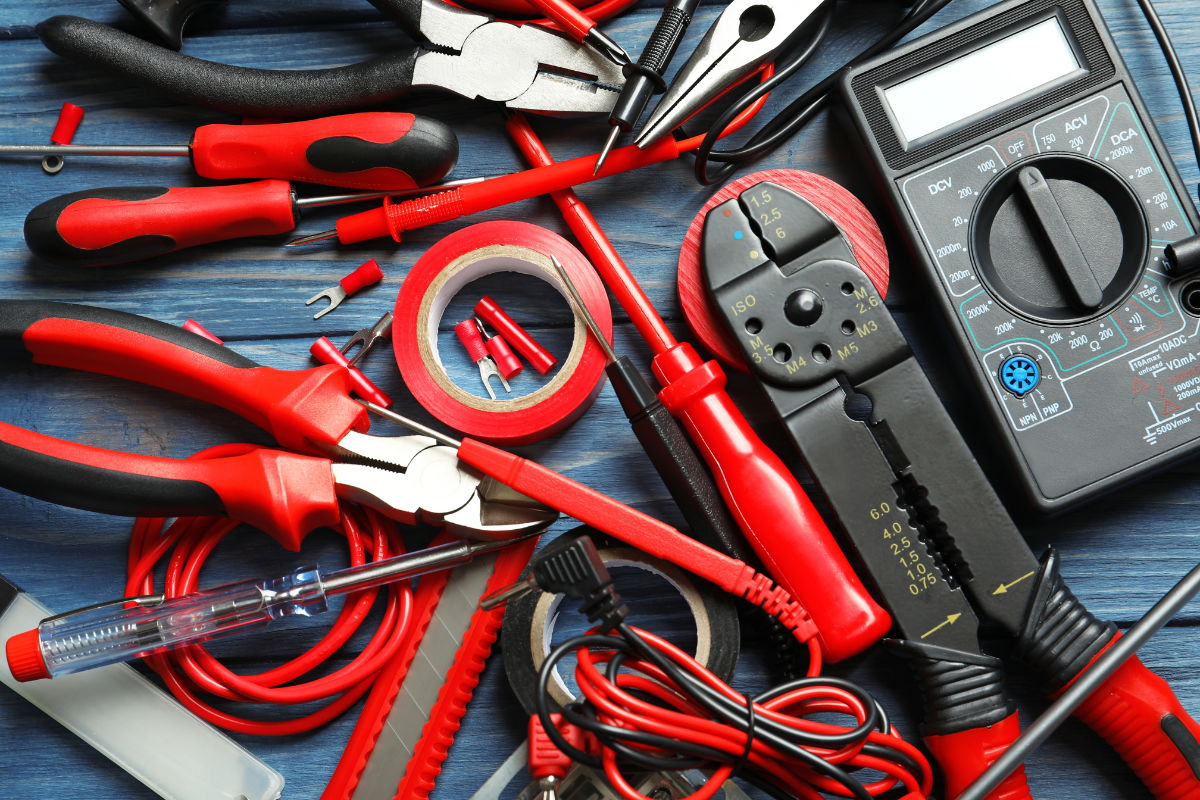
Tools have been essential companions for humans since ancient times, shaping civilizations and driving progress. From the simplest stone implements to today's advanced power gadgets, tools have evolved remarkably. Ever wondered how a hammer got its shape or why certain tools are indispensable in every household? This blog post dives into 27 intriguing facts about tools that will surprise you and make you appreciate these everyday helpers even more. Whether you're a seasoned DIY enthusiast or just curious about the items in your toolbox, these facts will provide a fresh perspective on the tools we often take for granted. Get ready to be amazed by the history, innovation, and fun trivia surrounding these indispensable objects!
Key Takeaways:
- Hand tools, power tools, measuring tools, cutting tools, fastening tools, and specialty tools have evolved over centuries, shaping the way we work and build. From hammers to laser levels, each tool has a fascinating history and purpose.
- Tools have a rich history, from the invention of the hammer 3.3 million years ago to the introduction of laser levels in the 1970s. They have revolutionized the way we work, making tasks faster, more efficient, and precise.
Hand Tools
Hand tools have been around for centuries, evolving from simple stones to sophisticated devices. They are essential for various tasks, from home repairs to professional construction.
- The hammer is one of the oldest tools, dating back to 3.3 million years ago.
- Screwdrivers were invented in the late Middle Ages, around the 15th century.
- Pliers were first used by blacksmiths in Europe during the Bronze Age.
- The adjustable wrench was invented by Johan Petter Johansson in 1891.
- Early saws were made from flint and used by ancient Egyptians.
Power Tools
Power tools have revolutionized the way we work, making tasks faster and more efficient. These tools are powered by electricity, batteries, or compressed air.
- The first electric drill was invented by Arthur James Arnot in 1889.
- Circular saws were initially used in sawmills in the late 18th century.
- The cordless drill was introduced by Black & Decker in 1961.
- Nail guns can fire nails at speeds up to 1,400 feet per second.
- Angle grinders were first used in the 1950s for metalworking.
Measuring Tools
Accurate measurements are crucial in any project. Measuring tools ensure precision and help avoid costly mistakes.
- The earliest rulers were made of ivory and date back to 1500 BC in the Indus Valley.
- Tape measures were invented in the 19th century and have since become a staple in every toolbox.
- The caliper, used for measuring the distance between two opposite sides, was invented by Pierre Vernier in 1631.
- Spirit levels, used to determine the horizontal plane, were first used by the ancient Egyptians.
- Laser levels, which provide more accuracy, were introduced in the 1970s.
Cutting Tools
Cutting tools are essential for shaping and resizing materials. They come in various forms, each designed for specific tasks.
- Scissors were invented in ancient Egypt around 1500 BC.
- The utility knife, also known as a box cutter, was first used in the 1920s.
- Chainsaws were initially developed for medical purposes in the 1830s.
- The jigsaw, used for intricate cuts, was invented by Albert Kaufmann in 1947.
- Bolt cutters, designed to cut through metal, were first used in the 19th century.
Fastening Tools
Fastening tools are used to join materials together securely. They range from simple hand tools to advanced power tools.
- The earliest nails date back to 3400 BC in ancient Egypt.
- The first screws were used in the 1st century BC by the Greeks.
- Staple guns, used for fastening materials, were invented in the 19th century.
- Rivet guns, essential in construction and manufacturing, were first used in the early 20th century.
- The impact driver, which delivers high torque, was introduced in the 1960s.
Specialty Tools
Specialty tools are designed for specific tasks and industries. They often have unique features that make them indispensable for certain jobs.
Final Thoughts on Tools
Tools have shaped human progress for centuries. From the simple hammer to advanced power drills, they make tasks easier and more efficient. Knowing some interesting facts about tools can deepen your appreciation for these everyday items. For instance, did you know the first tools date back over 2.6 million years? Or that the Swiss Army Knife was invented in 1891? These tidbits highlight the evolution and innovation in tool design. Whether you’re a DIY enthusiast or just curious, understanding the history and functionality of tools can be both fun and educational. So next time you pick up a wrench or screwdriver, remember the rich history behind it. Tools aren’t just objects; they’re a testament to human ingenuity and creativity. Keep exploring, keep learning, and never underestimate the power of a good tool.
Frequently Asked Questions
Was this page helpful?
Our commitment to delivering trustworthy and engaging content is at the heart of what we do. Each fact on our site is contributed by real users like you, bringing a wealth of diverse insights and information. To ensure the highest standards of accuracy and reliability, our dedicated editors meticulously review each submission. This process guarantees that the facts we share are not only fascinating but also credible. Trust in our commitment to quality and authenticity as you explore and learn with us.
